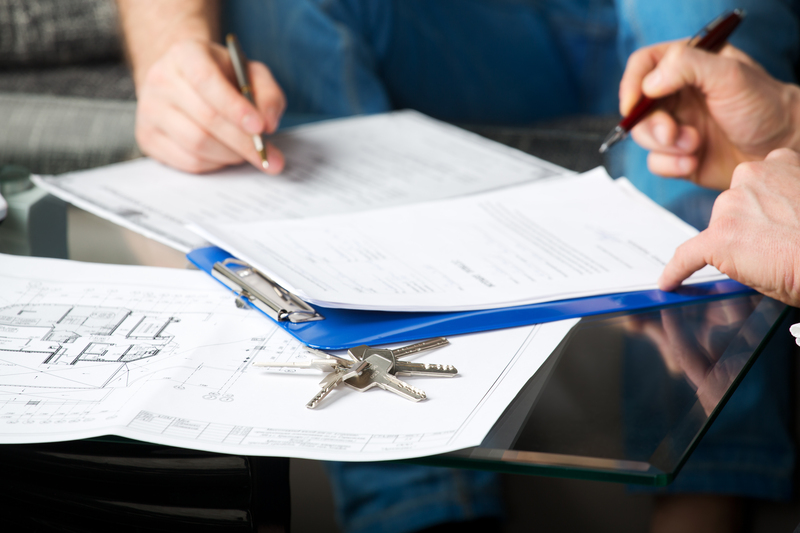Expert Advice on How to Pack Smartly for a House Move
Posted on 03/06/2025
Expert Advice on How to Pack Smartly for a House Move
Moving to a new home can be both exciting and overwhelming. Whether you're relocating across the city or starting fresh in a new state, packing your belongings effectively can be the key to a smooth and stress-free transition. To help you streamline the process, our comprehensive guide shares expert advice on how to pack smartly for a house move. Discover actionable packing tips, clever organization methods, and essential items you'll need so your moving day goes off without a hitch.
Why Packing Smartly Matters
Packing for a house move isn't just about putting things in boxes. Smart packing ensures:
- Your items are protected from damage
- Unpacking is quick and systematic
- You save money on packing supplies and moving time
- You reduce stress during the moving process
The strategies you use for house move packing can make all the difference.

Start Early: The Key to Packing Smart for a Move
Procrastination is the enemy of efficient packing. Experts recommend starting preparations at least 4-6 weeks before your moving date. Early preparation lets you declutter, gather the right materials, and pack in a systematic way, reducing the likelihood of last-minute chaos.
Top Smart Packing Tips for House Moves
- Plan Ahead: Create a moving checklist and timeline to keep track of tasks.
- Declutter: Sort through your belongings and donate or discard items you no longer need.
- Gather Supplies: Collect quality boxes, packing tape, bubble wrap, and markers.
- Label Everything: Every box should be labeled with its contents and destination room.
- Pack by Room: Keep items from the same room together to simplify unpacking.
Essential Packing Supplies for a House Move
One cornerstone of packing smartly for a home move is using the right supplies. Invest in quality materials to protect your possessions and make transportation easier.
- Sturdy boxes in various sizes for different items
- Packing tape and dispensers for sealing boxes securely
- Bubble wrap and packing paper for fragile items
- Permanent markers for clear labeling
- Colored labels or stickers for categorizing rooms (optional but helpful)
- Furniture blankets and stretch wrap to safeguard larger items
- Ziplock bags for screws, bolts, and small parts
- Suitcases and duffel bags for clothing and soft items
Declutter Before You Pack
Before stuffing boxes, take time to declutter ruthlessly. Moving is the perfect opportunity to lighten your load. Here's a proven decluttering method from moving professionals:
- Start with one room at a time. Sort items into keep, donate, sell, and discard piles.
- Be honest about utility and sentiment. If you haven't used something in the past year, consider letting it go.
- Host a garage sale or use online marketplaces to get rid of items and raise extra cash for your move.
- Donate to local charities or recycling centers.
This strategy not only makes packing easier, it can also cut down on moving costs, as you'll have fewer things to transport.
Step-by-Step Packing Strategy for a House Move
Organizing your packing process is one of the most effective ways to ensure a stress-free move. Use this expert-approved sequence:
1. Pack Infrequently Used Rooms First
- Start with basements, attics, and storage closets.
- Next, move on to spare bedrooms or guest bathrooms.
2. Pack Seasonal and Non-Essential Items
- Pack out-of-season clothing, sporting gear, or holiday decorations early.
- Clearly label these as you won't need them until after the move.
3. Save Everyday Items for Last
- Wait until the final week to pack up daily dishes, linens, and toiletries.
- Keep a personal essentials kit for each family member.
4. Use the Right Box for the Right Item
- Books and heavy items: Use small boxes to prevent overloading.
- Lightweight/bulky items: Use larger boxes for pillows, bedding, or toys.
Expert Packing Hacks for Efficiency
Smart movers rely on proven hacks for maximum efficiency. Here are popular expert suggestions on how to pack efficiently for a house move:
- Fill every gap: Use towels, socks, or soft clothing to cushion fragile items and fill spaces in boxes.
- Keep wardrobe in drawers: Instead of emptying dressers, secure drawers with plastic wrap and move them as-is.
- Photo your electronics set-ups: Take photos of wiring and cable configurations so you can easily reassemble everything.
- Roll clothes instead of folding: Save space and minimize wrinkles.
- Label boxes on multiple sides: Ensures you can identify boxes no matter how they're stacked.
- Pack plates vertically: They are less likely to break during transit.
- Use original boxes for electronics and appliances: Provides the best fit and protection.
Room-By-Room Packing Guide
To maximize your house move organization, pack one room at a time and use this checklist as a reference:
Kitchen
- Dispose of or give away perishable food in advance.
- Pack plates, glasses, and cookware with bubble wrap and in small, sturdy boxes.
- Label boxes as "fragile" and "this side up".
- Secure all appliances with cords tied and removable parts detached.
Living Room
- Remove and wrap cushions and pillows.
- Disassemble furniture if possible to save space.
- Wrap TVs, artwork, and electronics in moving blankets or bubble wrap.
Bedrooms
- Use wardrobe boxes for hanging clothes.
- Pack shoes in original boxes or wrap in pairs with paper.
- Use suitcases for folded clothes and essentials.
Bathrooms
- Seal open toiletries with tape or put them in resealable bags to prevent leaks.
- Pack a "First Night" kit with soap, towels, and toilet paper for easy access.
Home Office
- Back up important documents digitally before moving any files or computers.
- Use file boxes for paperwork and clearly label them.
- Protect sensitive electronics with bubble wrap and anti-static bags.
Advanced Tips for a Smart House Move
- Color-code boxes for each room, for immediate recognition during unloading.
- Number your boxes and keep an inventory list for quick reference.
- Reserve a "last to load, first to unpack" box for tools, cleaning supplies, and other moving-day essentials.
- Communicate with your movers--be clear about fragile or high-value items.
Common Packing Mistakes and How to Avoid Them
The best way to pack smart for a house move involves learning from common missteps:
- Overfilling boxes: Heavy boxes are difficult to lift and prone to breaking. Pack heavy items in small boxes.
- Under-padding fragile items: Use extra padding to ensure breakables arrive whole.
- Not labeling boxes properly: Unpacking without clear labels leads to confusion.
- Ignoring valuables: Pack jewelry, passports, and other irreplaceable items separately and carry them on moving day.
Unpacking Tips: Smart Strategies for Your New Home
Your work doesn't end with the move. Here are expert tips for efficiently unpacking:
- Unpack Essentials First: Use your "first-night" boxes for bedding, toiletries, and kitchen basics.
- Set Up Necessities: Get beds, bathrooms, and basic electronics ready before starting on non-essentials.
- Go Room by Room: Focus on one room at a time to avoid getting overwhelmed.
- Break down boxes as you go: Keeps your new space organized and tidy.
Eco-Friendly Packing Ideas
Caring for the environment is always important, even when moving. Implement these green smart packing for house move tips:
- Reuse boxes from local stores or friends
- Use blankets, towels, or clothing as alternative packaging
- Recycle or donate all packing materials after your move
- Opt for biodegradable packing peanuts or paper-based wraps

Frequently Asked Questions About Smart Packing for a Move
How far in advance should you start packing before a move?
Begin packing at least one month before your moving date. Start with non-essentials and seasonal items, then gradually work toward daily-use rooms and items.
What should you pack last when moving?
Pack essential items such as toiletries, medications, important documents, and basic kitchenware last so they're easily accessible on arrival at your new home.
How can you keep fragile items safe during a move?
Wrap each fragile item in bubble wrap or paper individually, fill spaces with crumpled paper or clothing for cushioning, and label boxes clearly as "fragile."
Is it better to hire professional packers?
If you have a tight schedule, many fragile items, or a large household, professional packers can save time and provide peace of mind with their expertise and speed.
Conclusion: Mastering the Art of Packing Smart for Your House Move
Smart packing for a house move is more than just boxing up your belongings -- it's about planning, methodical preparation, and strategic organization. By following the expert advice above, you'll reduce stress, save time, and ensure your items arrive safely at your new home. Remember to start early, use the right materials, and keep a detailed inventory. With these proven packing tips, your next move will be your most efficient ever!
Happy moving -- and welcome to your new home!



